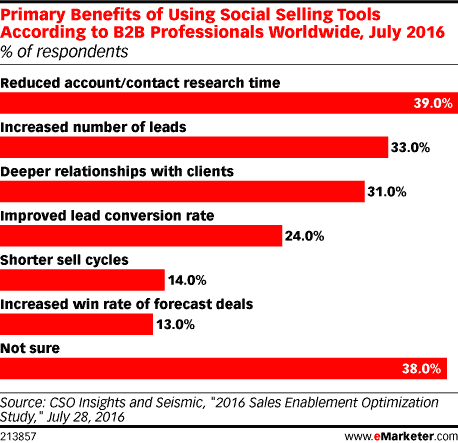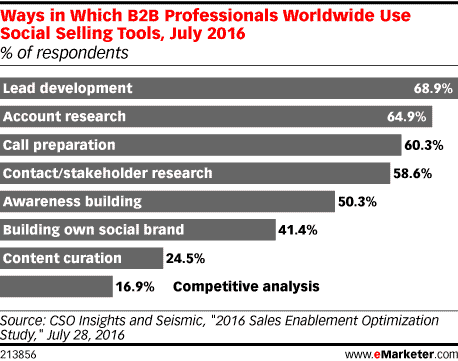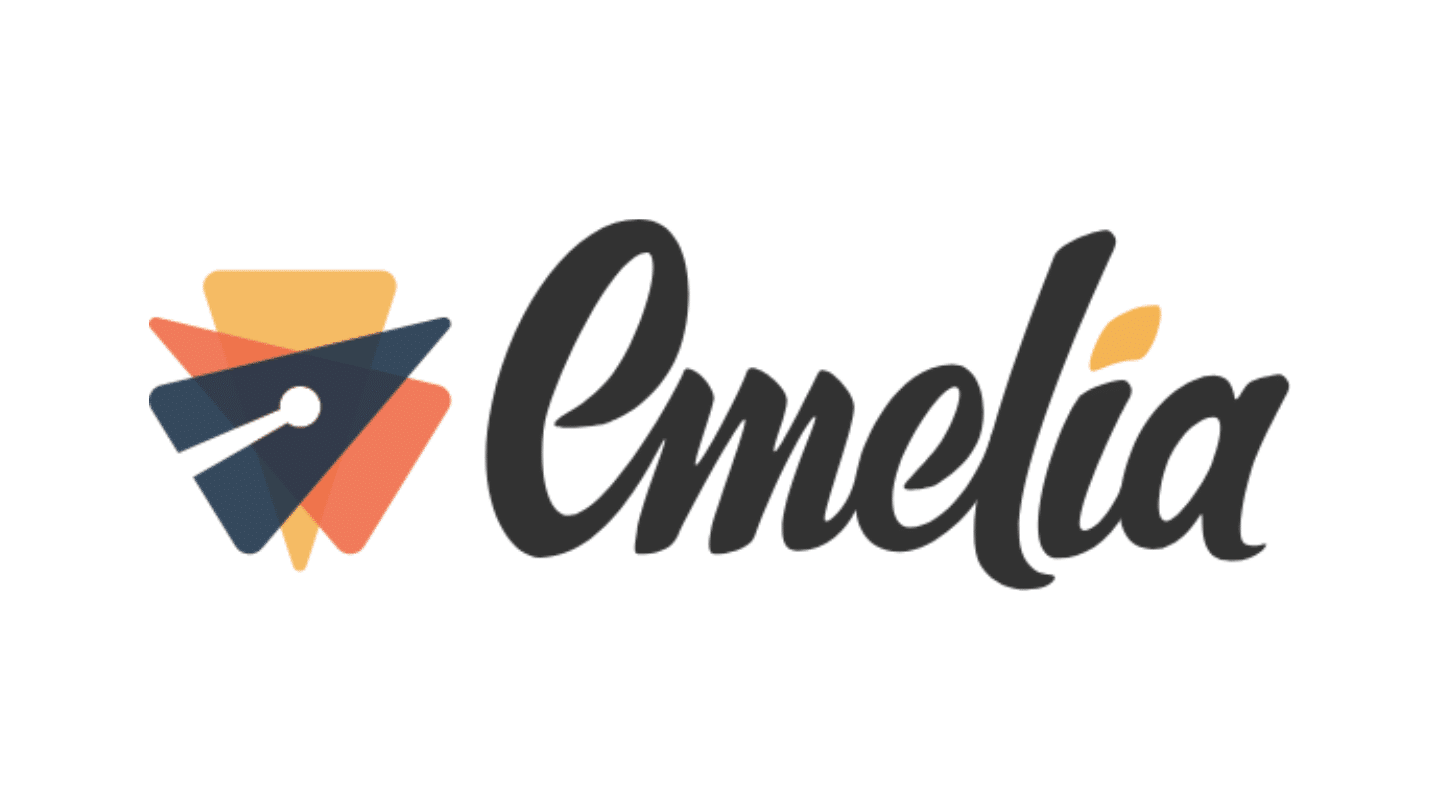Social selling is a process that B2B salespeople are already familiar with. It is about developing a personal relationship with the buyer. The term was formalised in a paper from British Columbia University that shows a strong correlation between the existence of a commonality between buyer and seller, and the likelihood of a sale being made.
In a few words, social selling consists in using social networks to interact directly with your prospects. The challenge is to build your authority on a subject by answering your prospects’ questions, and providing them with free value until they are ready to make a purchase.
In this article, we will explain why it is interesting for your company to use social selling, the four pillars of this process, and then we will present you the best practices of social selling and its implementation on social networks.
Sommaire
#1 Why use social selling?
You’ll read a lot of statistics in the following section about why your brand should care about social selling. But before you start, you need to know that social selling works! In fact, 78% of salespeople who engage in social selling perform better than their peers who do not. If your sales team has not yet embraced social selling, your sales are simply not reaching the level where they could be. There are three main reasons for this:
1. Social selling allows your sales team to build real relationships
Let’s face it: nobody likes cold calls. And the truth is, they’re not very effective: 90% of key decision makers say they never answer cold calls. Using social tools to listen in on relevant conversations in your industry, known as social listening, allows your sales team to identify new prospects who are already talking about your company, your competitors or your industry, so you can contact them with useful information when the time is right.
In a recent survey by CSO Insights and Seismic, one in three B2B professionals said social selling tools increase the number of prospects they have to work with. Even more – 39% – said social tools reduce the time spent researching accounts and contacts.

With prospects sharing so much information publicly (on social networks for example) about their needs, wants and pain points, even your first point of contact can be personalised, relevant and helpful, rather than intrusive and cold. This leads to a more meaningful ongoing perspective and customer engagement.
31% of B2B professionals say that social selling tools have enabled them to build deeper relationships with customers.
Best of all, building a strong network across various social media channels allows you to seek introductions to new sales prospects through existing mutual connections, creating an immediate sense of trust. This trust is an incredibly important resource for both customers and sellers.
87% of B2B buyers say they have a favourable impression of a person introduced through their professional network.
So it’s no surprise that LinkedIn’s internal data shows that sales professionals have a high social selling index (a measure based on how salespeople build their personal brand). Focus on the right prospects, engage them with relevant content and build trusting relationships: you’ll get 45% more sales than others and be 51% more likely to reach your sales quotas.
2. Your customers are already engaged in social buying
What is social buying? Just turn the concept of social selling on its head. Just as sales professionals can use social listening and other social search strategies to find potential customers, these potential customers are already using social listening and social search to find potential sellers. They search for them online and form an opinion about the most suitable salesperson, all before making contact.
Gartner found that customers are, on average, 57% of the way through the buying process before engaging with a sales professional, and IDC found that 75% of B2B buyers and 84% of executives use contacts and information from social networks as part of their buying process. If you’re not actively engaged in social selling, you’re not showing up in this social buying research: that’s a lot of potential sales missed. The good news is that, according to LinkedIn:
- 76% of buyers are willing to have a conversation on social networks with potential sellers,
- Over 62% of B2B buyers respond to sellers who connect with them to share information and opportunities relevant to their business.
- Even better, 92% of B2B buyers are willing to engage with a sales professional who is a known industry thought leader.
A reputation you can build by posting thoughtful and relevant content on your social networks on a regular basis. Beyond the initial sale, keep in mind that 53% of customer loyalty is driven by a salesperson’s ability to provide unique information. This is a skill that salespeople can demonstrate through their sharing of content on social media, and then confirm through their ongoing social connections with past customers. Teams engaged in social selling have a seven point higher customer renewal rate than teams that have not adopted it.
3. Your main competitors are already using social selling
71% of all sales professionals – and 90% of top sellers – already use social selling tools.
Discover our selection of the best software to generate leads on linkedin.

Among younger salespeople, the figures are even higher, with 78% using social selling tools and 63% saying that these tools are essential to their sales performance. If you don’t enable and equip your sales team to use social tools, it will be harder for you to recruit the best salespeople, especially among younger people.
In addition, brands in almost every sector are adopting social selling tools.
- Microsoft increases productivity by 38% by socially prospecting leads for new cloud offering
- UK travel company Corporate Traveler achieving £5.5m in new sales using social selling
- The Vancouver Canucks using social selling to increase ticket sales for hockey games.
#2 The four pillars of social selling
1. Create a professional brand
Today’s world of B2B buyers is very selective and will only work with trusted suppliers. A strong professional brand shows that you are an active participant in your industry. This leads to more enquiries from prospects.
2. Focus on the right prospects
Social selling allows you to find and connect with prospects more effectively than traditional sales. It also allows you to identify prospects who meet your established criteria – such as role, function or industry: with LinkedIn this has never been easier.Over 76% of buyers feel ready to have a conversation on social media.
3. Engage with ideas
Position yourself as an expert by sharing relevant industry content, commenting on news alerts and building your professional brand. Over 62% of B2B buyers respond to sellers who connect with relevant ideas and opportunities.
4. Build trusting relationships
Build trust with prospects by sharing your views and helping to provide relevant information on certain pain points. Have authentic conversations and focus on the prospect’s needs first, then the sale.
#3 Best practices in social selling
Now that you know why you should be interested in social selling, let’s look at some best practices for implementing an effective social selling strategy.
Introduce yourself
You know that bots are not very “social”. You might be tempted to save time with automated commenting and liking tools, but these do nothing to build relationships. In fact, they can seriously damage your personal and professional brand. There are ways to integrate social bots into marketing and customer service, but when it comes to selling, nothing beats a human. So show up, be engaged and present. Be yourself.
To remember
The purpose of social selling is first and foremost to build relationships, to make you seem more human and approachable.
Of course, since you won’t be alone in your social selling efforts, “showing up” also has another meaning. You need to make sure that your profile actually shows up when customers and prospects are looking for expertise in your sector, so that they start to recognise you as a leader – and a valuable contact – in your field. Make sure you optimise your social media profiles to maximise the impact of your social selling strategy. Look at your profiles from the perspective of a prospect or customer. Do they present you as a credible professional with valuable information relevant to your market? If not, make some adjustments to ensure that your profiles present you in the best possible light and that the tone and message are consistent across all networks.
2. Listen strategically to identify prospects
Your customers and prospects share incredibly valuable information on their social networks. Basically, they tell you exactly what they need. All you have to do is pay attention. Use tools to monitor what people are saying about you, your business, your industry and your competitors.
Watch for pain points and referral requests, both of which offer you natural opportunities to provide the solution to a problem. Before reaching out to any of the prospects you identify, check their follower and follow lists to see if you have mutual connections. If you do, ask your mutual contact for an introduction. And be sure to tailor your message to the wealth of information people share on their profiles. For example, mention a common interest, or a blog post they shared that you particularly liked.
3. Provide value
If you want to do social selling, you have to do it right. This means providing valuable and clear information to the right prospects at the right time. When interacting with prospects and customers via social networks, it is important not to overdo it. Rather than simply touting the value of your product or service, your goal should be to provide relevant information that can help you establish yourself as an expert in your field. Write articles that share important knowledge, but don’t be afraid to share relevant articles from others as well. When sharing content from others, add your own commentary on how the knowledge can be applied in your specific field. It is okay to mention your product or service in some of your social media posts, but don’t make a sales pitch or presentation.
Your goal in social selling is to build relationships that will eventually lead to a sale, not to make a sale on first contact. Which brings us to the last of our four best practices in social selling …
4. Build authentic relationships
Over time, you need to keep in touch with your new social network contacts. Pay attention to the content they post and occasionally jump in with a comment to let them know that you have read and appreciated what they have to say. If a contact moves to a new job or company, send a brief note of congratulations. If you notice a contact asking for help or advice, jump in with a constructed response, even if it doesn’t directly promote your product. Focus on how you can help your contacts or make their lives easier. If you can establish yourself as the go-to person in your industry, guess who they will call when they are ready to make a purchase?
#4 Putting it into practice
With the above best practices in mind, here are some specific tips for starting to sell socially on Linkedin and Twitter:

As a professional social network, LinkedIn is the most obvious network to engage in social selling, especially in the B2B space.
50% of B2B buyers use LinkedIn as a resource to make purchasing decisions.
You need to be active on LinkedIn to position yourself as a player in these decisions. Here are three key ways to start using LinkedIn for social selling:
1. Build your credibility
Ask for recommendations from contacts with whom you have a good relationship. These are posted on your profile and can give you instant credibility with new contacts. Also ensure that your profile highlights expertise relevant to a potential client rather than an employer. Highlight how you have helped previous clients achieve their goals.
2. Expand your network
Use LinkedIn’s advanced search to discover potential new connections by leveraging your existing network relationships. According to Fortune, an advisor at financial services company Guardian Life collected 35 referrals from a single client using LinkedIn. This representative’s activity has more than doubled since he started prospecting on social networks.
3. Be active in Linkedin groups
Join LinkedIn Groups that are relevant to your industry to start networking with peers and prospects. Use the search function on your LinkedIn homepage to find new groups, or choose from LinkedIn’s suggestions of groups you might like.

Twitter is a great social listening network because of the ability to create lists to monitor content for specific groups of people. Here are three key lists you can use to start social selling on the Twitter network:
1. Existing customers
Use this list to keep an eye on your existing customers and look for opportunities to reply or like their Tweets so you can stay on their radar. Don’t overdo it, though, and make sure your engagements are meaningful. Only “like” tweets that you actually like, and only comment when you have something valuable to say. Unless you’re in an ultra-secret industry, you may want to consider making this list public so that prospects can get an idea of the type of businesses you already serve.
2. Prospects
When you identify potential future customers, add them to a private list. You don’t want to share this information with your competitors, and you don’t want users to know that you have identified them as prospects until it’s time to contact them. Keep an eye on this list, but don’t engage with the same sense of familiarity you have with existing customers. Pay attention if they need help and you can respond with a helpful comment.
3. The competitors
Again, this list should be private. Adding competitors to a private list allows you to keep an eye on them without actually following them. This competitive intelligence can help you brainstorm ideas for your own social selling efforts.

Twitter chats can also be an important part of your social selling strategy, as they allow you to establish yourself as an industry expert and can serve as an important prospecting strategy. Join an existing chat that is relevant to your industry or start your own.






